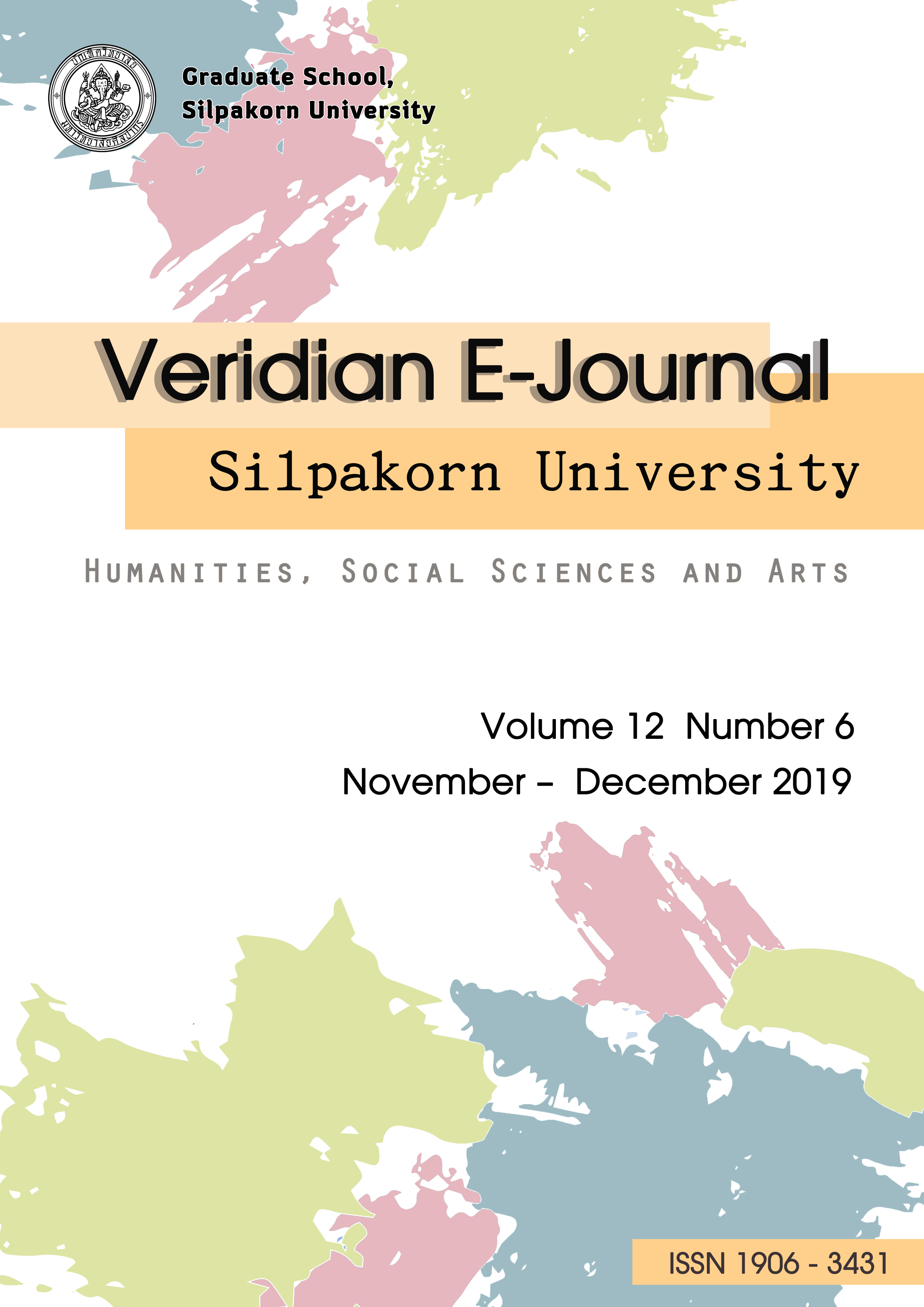การพัฒนารูปแบบการเรียนการสอนเพื่อเสริมสร้างความสามารถในการสื่อสารภาษาจีนของนักเรียน ระดับชั้นมัธยมศึกษาตอนปลาย (The Development of Blended Instructional Model to Enhance Chinese Communicative Learning Competence of High School Students)
Main Article Content
Abstract
การวิจัยครั้งนี้ มีวัตถุประสงค์เพื่อพัฒนาและหาประสิทธิภาพของรูปแบบการเรียนการสอนเพื่อเสริมสร้างความสามารถในการสื่อสารภาษาจีนของนักเรียนระดับชั้นมัธยมศึกษาตอนปลาย และเพื่อประเมินประสิทธิผลการใช้รูปแบบการเรียนการสอน กลุ่มตัวอย่างที่ใช้วิจัยในครั้งนี้เป็นนักเรียนระดับชั้นมัธยมศึกษาปีที่ 6 ภาคเรียนที่ 2 ปีการศึกษา 2560 วิชาเอกภาษาจีน ที่เรียนรายวิชาภาษาจีนเพื่อการท่องเที่ยว โรงเรียนสาธิตมหาวิทยาลัยศรีนครินทรวิโรฒ ประสานมิตร (ฝ่ายมัธยม) ผลการวิจัยพบว่า รูปแบบการเรียนการสอนเพื่อเสริมสร้างความสามารถในการสื่อสารภาษาจีนของนักเรียนระดับชั้นมัธยมศึกษาตอนปลาย (ESPPE Model) ประกอบด้วยองค์ประกอบ 3 องค์ประกอบ คือ องค์ประกอบเชิงหลักการและวัตถุประสงค์ องค์ประกอบเชิงกระบวนการ และองค์ประกอบเชิงเงื่อนไขการนำรูปแบบไปใช้ องค์ประกอบเชิงกระบวนการมีขั้นการสอน 5 ขั้นตอน ได้แก่ 1) ขั้นเข้าสู่บทเรียน (Engage : E) 2) ขั้นการเรียนการสอน (Study : S) 3) ขั้นฝึกตามแบบ (Structured Practice : P) 4) ขั้นฝึกอิสระ (Independent Practice : P) และ 5) ขั้นประเมินและสรุปผล การเรียน (Evaluation of Performance and Feedback : E & F) ผลจากการตรวจสอบความเหมาะสม ความเป็นไปได้และคุณภาพโดยผู้เชี่ยวชาญ จำนวน 5 คน พบว่า รูปแบบการเรียนการสอน ESPPE Model ตามความคิดเห็นของผู้เชี่ยวชาญในภาพรวมมีความเหมาะสม ความเป็นไปได้และคุณภาพโดยภาพรวมอยู่ในระดับดี ( = 4.00, S.D. = .00) และค่าประสิทธิภาพของรูปแบบการเรียนการสอนเท่ากับ 84.71/88.89 สูงกว่าเกณฑ์ 80/80 และผลการประเมินประสิทธิผลการใช้รูปแบบการเรียนการสอน พบว่า ความสามารถในการสื่อสารภาษาจีนของนักเรียนหลังการเรียนการสอนโดยใช้รูปแบบการเรียนการสอน สูงกว่าเกณฑ์ร้อยละ 80 อย่างมีนัยสำคัญทางสถิติที่ระดับ .05 และความพึงพอใจของนักเรียนที่มีต่อรูปแบบการเรียนการสอนอยู่ในระดับมาก (
= 4.35, S.D. =.13)
This research's objective is to develop and find the efficiency of an instructional model to enhance Chinese language communication competency in senior high school students, and to evaluate the effectiveness of the model. The sample group consists of grade 12 students studying Chinese for Tourism course, in Chinese major, at Prasarnmit Demonstration School (Secondary), during the second semester of 2017. The research presents the ESPPE Model, which contains three components – principle and objective, process and implementation. There are five steps in the process: 1) Engage: E, 2) Study: S, 3) Structured Practice: P, 4) Independent Practice: P, and 5) Evaluation of Performance and Feedback: E&F. The results of the adequacy, possibility and quality investigations by five experts shows that the ESPPE Model is good ( = 4.00, S.D. = .00), and the efficiency of the model is at 84.71/88.89, topping the standard score of 80/80. After evaluation of the ESPPE Model Implementation, it is found that Chinese language communication competence in 80 percent of the sample is above standard, with statistically significance level of .05. The satisfaction of the student sample is also high (
= 4.35, S.D. =.13)

